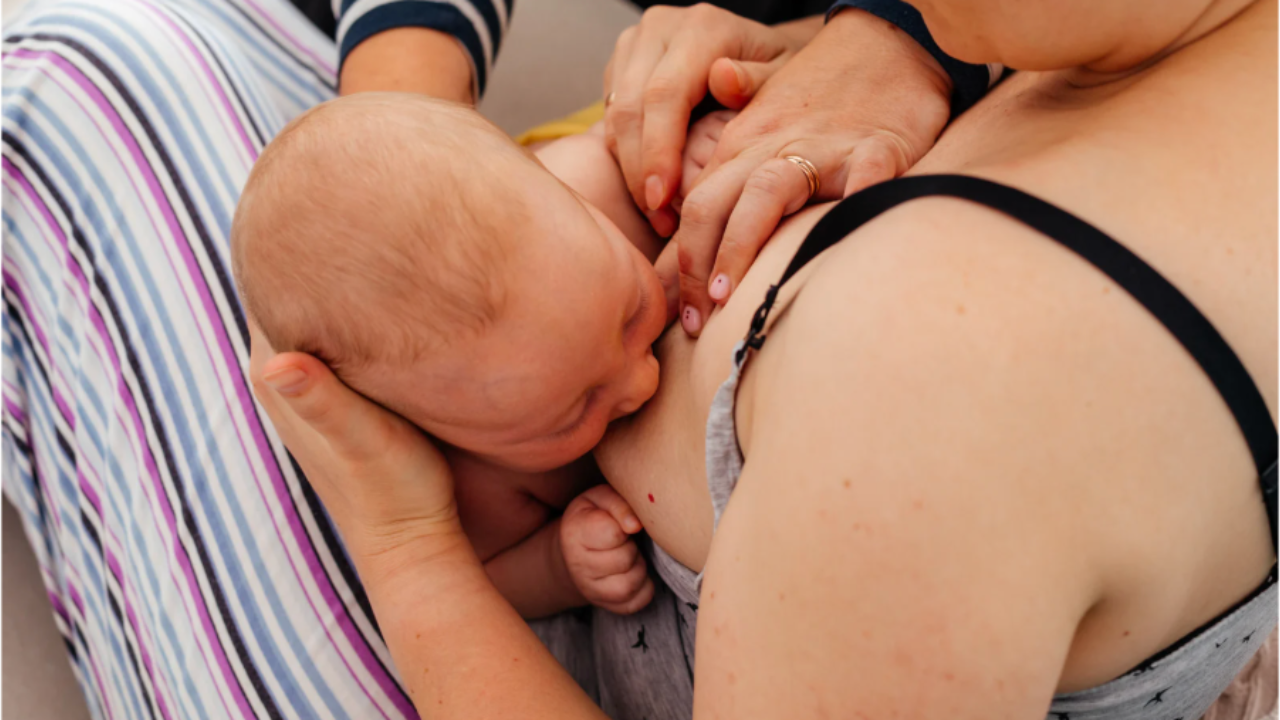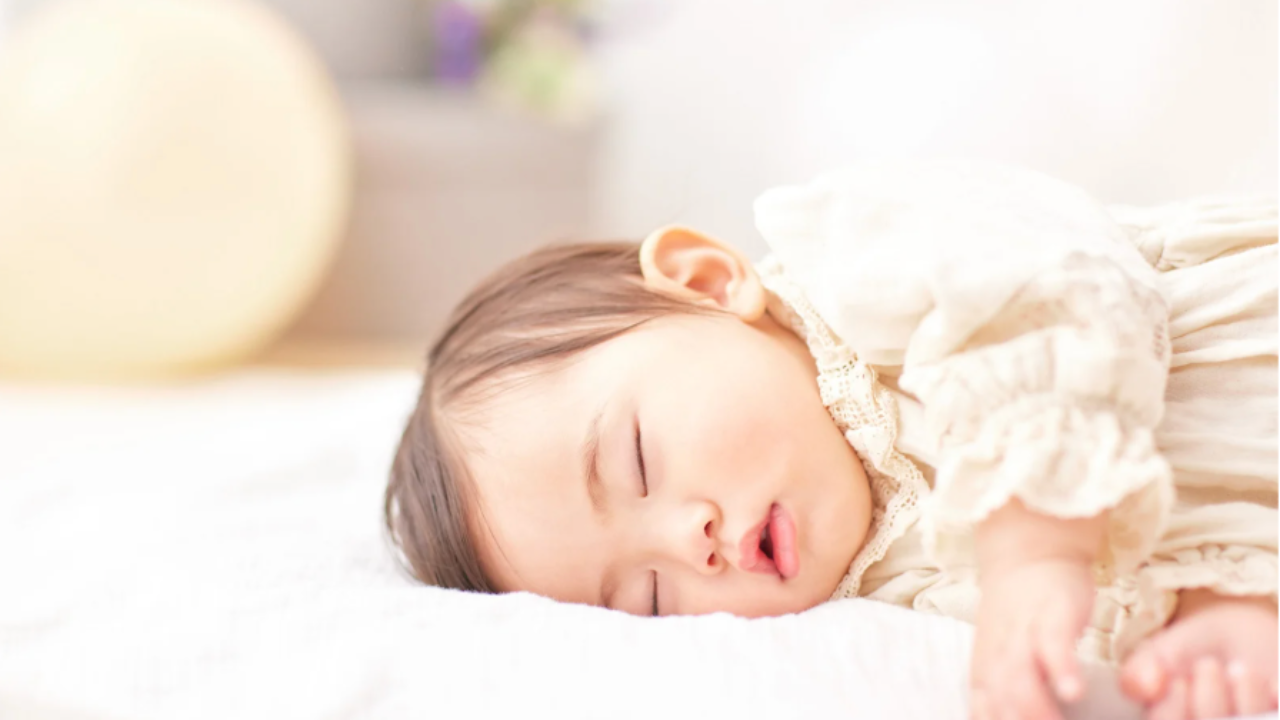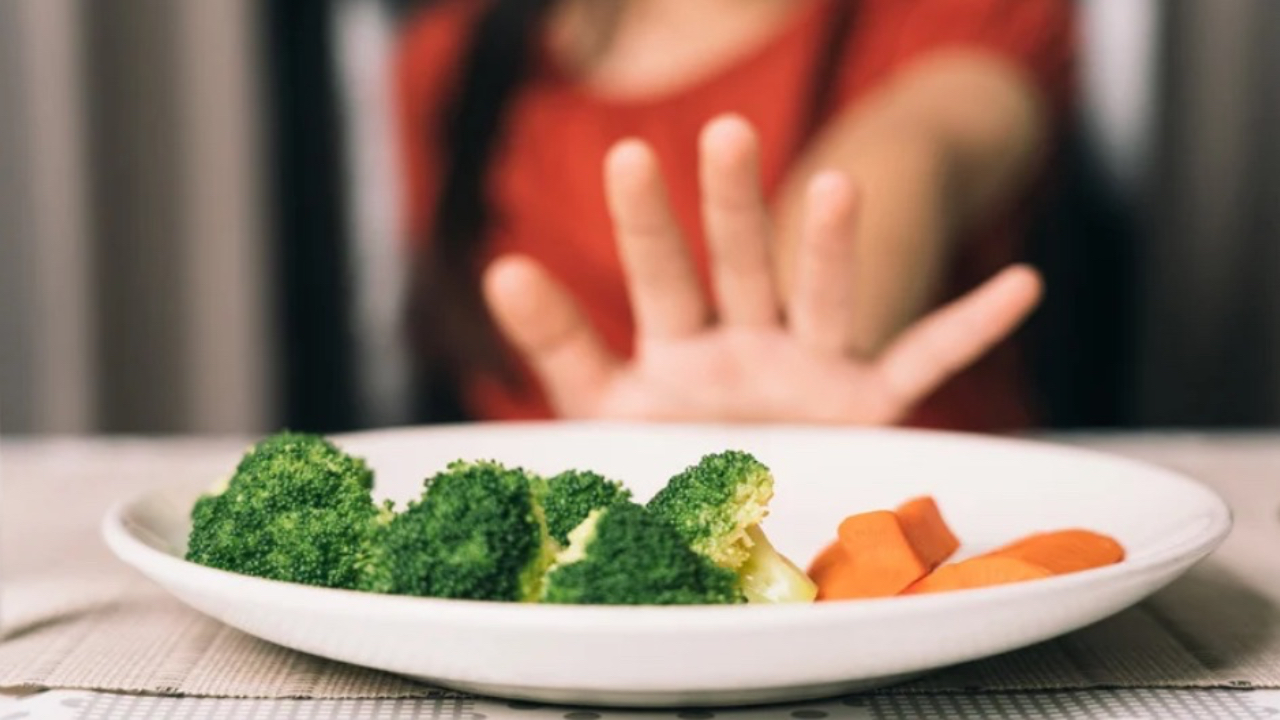Knowing your Baby: 2 Month Old Milestones
Becoming a parent is the absolute best, and by the 2 month mark maybe you have gotten into a routine with your new baby. During the first 2 months, survival mode may have been the main focus. But, after the survival mode ends, we can begin to observe all the ways our baby is growing and changing.
Throughout this article, we will discuss the 2 month old milestones for your baby. These milestones include physical development, reflexes, feeding, sleep, and cognitive and communication development. Our babies are complex beings, just like we are as adults, so it’s so fun to watch our baby’s develop and change throughout their 2nd month of life.
Download this tummy time guide here to help you find comfort & confidence to navigate tummy time from birth and beyond.
In regards to physical development, 2 month old milestones may look like increased tolerance in tummy time and head control. When placing your baby on their tummy over a wedge, boppy or towel, your baby may lift their head up to 90 degrees and maintain this position for 30 seconds or more. They may also lift their head and look to the right and to the left to observe items at a nearby distance. Use high contrast cards or light up toys at this age to encourage tummy time tolerance and physical development. Choosing toys are very important in encouraging physical development at this age. I love using this tummy time wedge with my second baby to elevate her chest in tummy time, and it's very easy to wipe down and clean if baby spits up! Read more about toys you can use with your baby here! You can also complete tummy time on your chest and interact with your baby at eye level. Interacting at this distance and in this position will encourage tolerance and bonding. During your baby’s 2 month old milestones, you may also observe your baby roll from belly to back from their tummy with their elbows underneath their chest. This is due to the shift in gravity when baby turns head to one side. Your baby’s physical development will continue to increase as the month passes by!

At 2 months, your baby may eat very frequently whether breastfed or bottle fed. Ounces given may range depending on the baby, but anywhere from 5-8 ounces is common at this age. Your baby may eat every 3-4 hours and may wake during the night for feedings. Your baby will also show signs of hunger at this age. Signs of hungry may be clenched fists or increased rooting to locate nutrient source. Your baby may also cry to signal hunger and may turn head towards breast in a searching fashion to show they are hungry. At this age, feeding sessions may last between 20 to 40 minutes on average but may be less or more for breastfed babies.

Reflexes are very prominent at the 2 month mark, and will integrate as your baby moves and grows. Reflexes are involuntary movements present at birth to aid in safety and physical development in your baby. These reflexes encourage development of 2 month old milestones and many more as the baby gets older. Reflexes that may be present in your baby at this age include the rooting reflex, the asymmetric tonic reflex, palmar grasping reflex, and the moro, or startle, reflex. There are many others, but these are common and well-known. The rooting reflex refers to the reflex in charge of locating the nutrient source. When stroking your baby’s cheek with a paci or finger, your baby may turn towards the stroke. This turning towards the stroke is the rooting reflex. This reflex shows the baby where the nutrient source is located so they can turn and feed, whether that be bottle or breast. Another reflex present is the asymmetric tonic reflex (ATNR). This reflex is present when baby lays on their back and turns their head to one side. When turning the head to one side, the same arm is straight in front and the opposite arm is bent. This reflex is also known as the bow and arrow reflex and assists in the development of rolling skills. The palmar reflex is also well-known and is often times associated with baby holding a caregiver’s finger. SO CUTE right!? This reflex is present when the palm of the baby is stroked or pressed. This encourages baby to close hand and grasp the object. This reflex is present within the first few months of a baby’s life and is their mode of grasping until they development more purposeful hand skills. The startle reflex, or the Moro reflex, is the last reflex we will discuss. This reflex results in baby opening arms and legs when they feel as though they are falling. This is a main reflex that swaddling is used to prevent because this reflex may disturb baby while sleeping. This reflex will integrate within the first few months of a baby’s life, therefore swaddling may not be indicated after this reflex disappears. Swaddling with arms in is also not recommended once baby is rolling to their sides, or all the way to their belly for safety reasons.

At the 2 month mark, you can feel as though your baby will never sleep through the night. And you may feel as though you will never sleep through the night again either! 2 month old milestones in regards to sleep can be different for every baby, but you can expect your baby to wake 1-3 or more times during the night for a feeding. Babies usually feed every 3-4 hours during the day at the 2 month mark, and this continues into the night. When my baby was 2 months old, he would wake to feed twice at night. He would wake around 12 AM after going down at 7:30 PM and then would wake again around 4 AM before waking up at 7:30 AM. This meant he would sleep approximately 3-5 hour stretches a night before waking to feed. Getting your baby on a schedule for sleep and feeding will help you begin to understand your baby more at this age. I recommend Moms on Call and/or Taking Cara Babies as these schedules are easy to follow and can begin as early as 2 weeks old. During the day, naps should be no more than 2 hours long to allow baby to sleep during the night time hours. Your baby may take 4 naps throughout the day, depending on the schedule you decide to follow, and may take a short cat nap in the late afternoon before going to sleep for the night. Your baby may be swaddled at this age with arms in and may be sleeping in a bassinet or their own crib. Be sure to monitor “flat head” at this age as this develops quickly with babies sleeping on their back. Read more about “flat head” here.

More cognitive and communication skills are beginning to emerge at this 2 month mark and your baby may begin to exhibit a social smile. Cognitive development relates to higher level skills like vision, more purposeful movement, and attention to items/others in the environment. At this age, your baby can only see close up, approximately 8-12 inches in front of their face. This is why when getting close to your baby in play may elicit smiling or eye contact. Viewing the caregiver at a close distance fosters a bonding relationship with baby and caregiver, which nurtures the development of social and communication skills. At the 2 month mark, your baby may also begin to respond to sounds in their environment by turning their head and looking towards a sound. Your baby is also very drawn to high contrast items and lights due to the visual skills at this age. Your baby begins to socially smile at the caregivers inconsistently during their 2 month milestones and may cry to signal hunger, sleepiness, or a need for a change as their way to communicate.

In conclusion, remember each baby grows and develops at their own pace. This information provided is to be used as a general guide in what to expect during your baby’s second month of life.
For more information on support your baby at home, join the Bloom by Infant Insights membership with resources that have helped over 1500+ parents & babies find peace & helpful resources to support their baby.
Thanks for reading! Enjoy your little one!
Brooke, OTR/L
PS: Want to track your baby’s development!? Download my free developmental milestone guide here!






